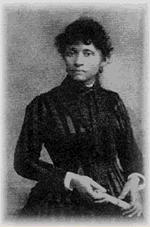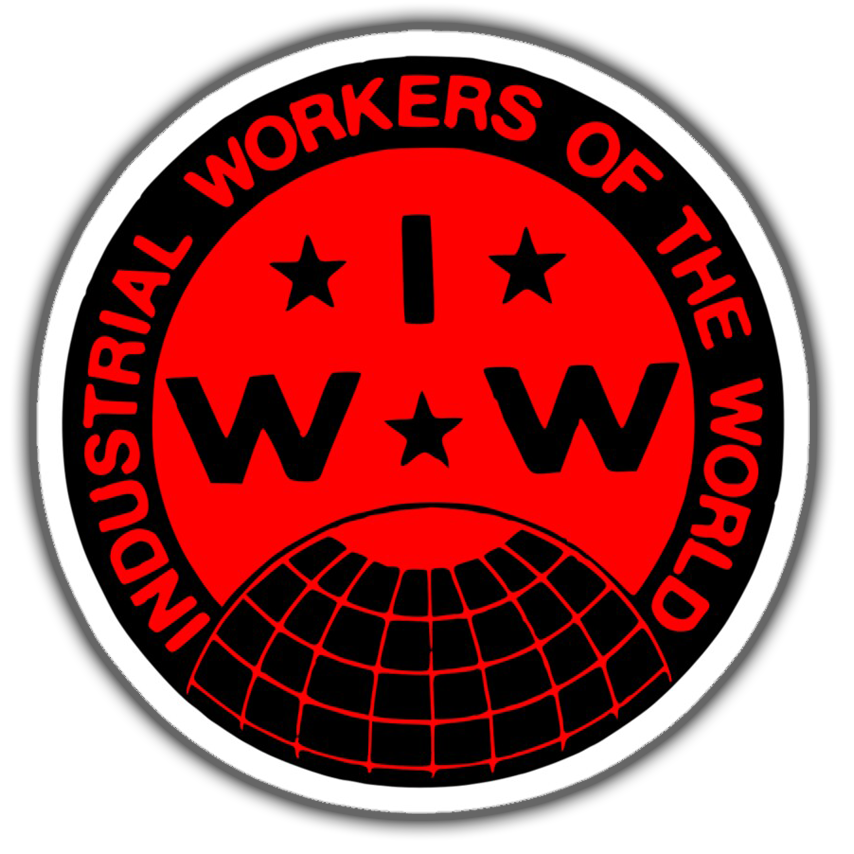


Lucy Parsons was a founding member of the Industrial Workers of the World (the IWW or Wobblies), a labor union fighting to abolish capitalism and instill workers' democracy. Born in Chicago in 1905, the IWW was a product of more than 200 trade unionists, socialists, anarchists and industrial unionists. From its inception the IWW offered a radical strategy and perspective counter to mainstream labor unions of the day. The IWW immediately took the lead in organizing minority workers against the ruling class. Unlike the American Federation of Labor, the IWW set forth to organize women, people of color, immigrants and unskilled workers into One Big Union, organized along industry lines instead of by craft, which was revolutionary at the time. Many prominent people of color and women took leadership roles in the IWW such as Ben Fletcher, Elizabeth Gurley Flynn and Frank Little. The IWW believed "the working class and the employing class" had "nothing in common" and urged direct action on the job to win demands and build working class power. The Industrial Workers of the World differed from conventional unions in more significant ways as well. The IWW was fighting for more than just better working conditions and a secure contract, they were working to build "the structure of the new society within the shell of the old". The IWW aimed to unite workers around the world, lock arms, and walk off their jobs in a mass general strike, rendering factory owners powerless, effectively overthrowing capitalism. In its place would be the new society based on industrial unionism, in which workers controlled their own destinies and the fruits of labor could be enjoyed by all. "It is the historic mission of the working class to do away with capitalism." —IWW Preamble The IWW was influenced by Lucy Parsons throughout its history in ways large and small. While she was never the pivotal organizing asset to the Union that Elizabeth Gurley Flynn, Big Bill Haywood, Ralph Chaplin, or Joe Hill were, she was a founding member of the IWW opening convention in 1905 where she gave a speech (alongside Mother Jones). Her articles frequently appeared in the IWW press (such as the One Big Union Monthly) and she often attended mass Wobbly meetings and conventions, where her speeches were always welcome. "Lucy Parsons' impact on labor radicals in general and Wobblies in particular," writes labor historian Franklin Rosemont, "was in fact immense". Her presence alone at IWW meetings was inspiring in and of itself, as she reminded Fellow Workers of the Haymarket legacy, the founding of the Wobblies, and the class struggles in which everyone was connected. "Strike not for a few cents more an hour, because the price of living will be raised faster still, but strike for all you earn, be content with nothing less." —Lucy Parsons The IWW rose to fame with startling new labor actions, solidarity with other workers, and incredible hard-fought victories over powerful employers. "Among the most significant of these" labor battles, writes IWW historian Joyce Kornbluh, "were the Goldfield, Nevada, miners' strike (1906-07), the Lawrence, Massachusetts, textile workers' strike (1912), the lumber workers' strikes in Louisiana and Arkansas (1912-13), the Paterson, New Jersey, silk workers' strike (1913), and the Mesabi Range ironworkers' strike (1916)." At the height of its popularity (1917) the IWW boasted 150,000 members. Much of the IWW's work involved free speech fights as well. Like Lucy Parsons and other radical orators of the day the right to speak freely was a vigourous struggle. The IWW also pioneered many new tactics, labor songs and working class culture which prevail among mainstream labor unions even today. Tactics such as the sit-down strike and industrial organizing, once considered radical ideas, are now part of the history of the labor movement in general. The IWW's array of labor songs are still sung today at union marches, pickets and rallies. The IWW eventually suffered severe state and corporate repression during the Red Scare and the subsequent Palmer Raids of 1917-1920, almost ending the organization. Under the auspices of the Espionage Act (1917) and the Sedition Act (1918), IWW organizers were thrown into prison on trumped-up charges (or no charges at all) for decades. IWW union halls were raided, sabotaged and destroyed. Key organizers were beaten, lynched, castrated and killed, and anti-IWW propaganda campaigns by employers were widespread and effective, leaving the Wobblies in a shattered, severely weakened state. However, the IWW continued to survive, and although it has never recovered from the state repression it endured, the Union is still fighting and winning today. In recent years several IWW union elections and contracts have been won, membership has increased, and IWW activity has grown. The legacy of the Industrial Workers of the World continues to serve as a historic inspiration for the labor movement today.
More information about the IWW:
Industrial Workers of the World By Joyce Kornbluh Lucy Parsons Speech to the IWW in 1905 By Lucy Parsons In November We Remember: The IWW & the Commemoration of Haymarket By Franklin Rosemont Industrial Workers of the World: A History to Remember By Ben Courtice Industrial Workers of the World: Aims and Objects By Lucy Parsons One Big Union: The Philosophy of Industrial Unionism By Joyce Kornbluh Speeches at the Founding Convention of the Industrial Workers of the World By Lucy Parsons Memories of the Industrial Workers of the World (IWW) By Elizabeth Gurley Flynn The IWW and the Shorter Workday By Lucy Parsons The Haywood Trial By Lucy Parsons Bread and Roses: The 1912 Lawrence textile Strike By Joyce Kornbluh Everett Massacre By Dan Georgakas Women In Textiles from Solidarity Forver Celebrating A Rich Tradition Of Women In The IWW By Autumn Gonzalez, Nicholas DeFilippis and Donal Fallon
The Justice Department Campaign Against the IWW, 1917-1920 By Steven Parfitt |